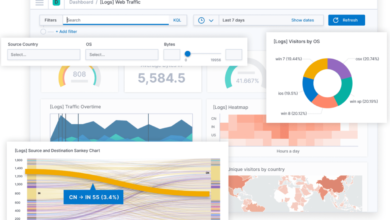20 Must-Know Workflow Automation Trends to Boost Business Efficiency
Discover 2025's top workflow automation trends that boost business efficiency by 40%. Learn AI-driven automation, no-code platforms, and ROI strategies for competitive advantage.

The workflow automation landscape is experiencing unprecedented transformation in 2025, fundamentally reshaping how businesses operate and compete in the digital marketplace. Recent studies reveal that 80% of organizations will adopt intelligent automation by 2025, making business efficiency through automated processes not just an advantage, but a necessity for survival.
Process automation has evolved far beyond simple task scheduling to encompass intelligent, AI-driven systems that can make autonomous decisions, predict workflow bottlenecks, and optimize business processes in real-time. Businesses incorporating AI into their workflows could achieve a transformative 40% boost in workforce productivity over the next decade, demonstrating the substantial impact these technologies can have on organizational performance.
The workflow automation market is projected to reach US$18.45 billion by 2025, with 60% of organizations achieving ROI within 12 months of implementation. These compelling statistics underscore why forward-thinking companies are prioritizing automation tools and digital transformation initiatives. From no-code platforms democratizing automation access to AI-powered workflows handling complex decision-making processes, the trends shaping 2025 offer unprecedented opportunities for operational efficiency.
Robotic Process Automation (RPA), intelligent process automation, and hyperautomation are no longer buzzwords but essential components of modern business strategy. Organizations that embrace these workflow management innovations report average productivity increases of 25-30% in automated processes, error reduction rates of 40-75% compared to manual processing, and employee satisfaction improvements of 15-35% when freed from routine tasks. This comprehensive guide explores 20 critical workflow automation trends that will define business success in 2025 and beyond.
The Current State of Workflow Automation in 2025
Market Growth and Adoption Rates
The workflow automation industry is experiencing explosive growth, with the Intelligent Process Automation market projected to expand from $16.03 billion in 2024 to $18.09 billion in 2025, reflecting a compound annual growth rate (CAGR) of 12.9%. This remarkable expansion indicates that business automation has moved from experimental technology to mission-critical infrastructure.
Enterprise automation adoption has accelerated dramatically, with more than 80% of companies planning to keep or grow their investment in automation solutions. The shift toward automated workflows reflects a fundamental change in how organizations approach operational efficiency and competitive positioning in an increasingly digital marketplace.
Industry-Wide Implementation Statistics
Current automation statistics reveal widespread adoption across all business sectors. Among various workflow automation technologies, robotic process automation (RPA) is at the top with 31% adoption and AI is the least at 18%, though AI-driven automation is gaining significant traction with 74% of current users saying that their organization will increase their AI investment in the next 3 years.
The implementation landscape shows that 57% of respondents say that their organization is in the piloting stage of workflow automation in one or more business units or functions, while 38% of respondents admit that their organizations have not taken the first step in automation. However, half of these non-adopters plan to implement process automation within the next year, indicating massive growth potential.
AI and Machine Learning Integration
Intelligent Process Automation (IPA)
Intelligent Process Automation represents the next evolution of workflow automation, combining machine learning, natural language processing, and advanced analytics to create systems that can adapt and learn. IPA enables systems to interpret data, respond to variations, and adjust outputs dynamically, moving beyond static rule-based automation to intelligent decision-making capabilities.
In healthcare, IPA verifies patient information and prioritizes urgent care based on AI-driven scoring systems. Financial services leverage IPA for real-time fraud detection and intelligent credit assessments, demonstrating how AI-powered workflows can enhance both efficiency and accuracy in critical business processes.
Agentic AI Systems
Agentic AI represents a breakthrough in workflow automation, enabling systems to make autonomous decisions without constant human oversight. From making process automation faster, to bringing intelligent workflows to life and recommendations to make your processes smarter, agentic AI will be the key trend to follow in 2025.
These advanced systems can analyze complex scenarios, weigh multiple variables, and execute decisions that previously required human judgment. Agentic AI is particularly valuable in business process automation where real-time decision-making can significantly impact outcomes and operational efficiency.
No-Code and Low-Code Platform Revolution
Democratizing Automation Access
The rise of no-code platforms and low-code solutions is revolutionizing who can create and implement automated workflows. Workflow automation platforms that require little to no coding expertise are on the rise, making automation technology more accessible to non-technical teams. This democratization enables business users to create sophisticated automation tools without relying on IT departments.
Citizen development programs are expanding rapidly, with Gartner predicting that by 2025, 70% of newly developed applications by enterprises will utilise low-code or no-code technologies, a significant increase from less than 25% in 2020. This trend empowers departments like HR, procurement, and finance to design their own workflow management solutions independently.
Visual Workflow Builders
Modern no-code platforms feature intuitive visual interfaces that allow users to drag and drop components to create complex business processes. These platforms include AI-powered field suggestions, form designers, and powerful integrations with existing business systems, making process automation accessible to users regardless of their technical background.
The visual approach to workflow automation significantly reduces development time and enables rapid prototyping and iteration, allowing businesses to adapt their automated workflows quickly as requirements change.
Hyperautomation and Enterprise-Wide Implementation
Coordinated Technology Integration
Hyperautomation extends beyond individual automation tools to create coordinated ecosystems where multiple technologies work together seamlessly. Hyperautomation is fundamentally constructed on top of existing automation, augmenting and upgrading using AI/ML, and coordinating numerous devices or technologies with ease.
This approach combines RPA, AI, machine learning, and other technologies to create comprehensive business automation solutions that can handle complex, multi-step processes across different departments and systems.
Organizational Transformation
The year of enterprise-wide automation will indeed be 2025, driven by competition, skills shortages, and rising talent costs that push organizations to automate processes and reduce reliance on manual labor. Enterprise automation is becoming a strategic imperative rather than a tactical improvement.
Hyperautomation enables organizations to free up talent for more productive duties, fostering professional development while reducing work-related stress from monotonous tasks. This transformation improves both business efficiency and employee satisfaction.
Security and Compliance Focus
Enhanced Cybersecurity Measures
As workflow automation systems handle increasingly sensitive data and critical processes, security has become paramount. As cyberattacks become increasingly sophisticated, automation platforms will place greater emphasis on cybersecurity and compliance features. Modern automation tools incorporate 256-bit encryption, multi-factor authentication, and advanced threat detection.
Automated cybersecurity workflows continuously monitor, detect, and respond to security threats faster than manual processes, significantly reducing risk and maintaining trust with customers and partners. These systems can identify and neutralize threats in real-time, providing superior protection for business processes.
Regulatory Compliance Automation
Compliance automation ensures that automated workflows meet regulatory requirements across different industries and jurisdictions. As regulations evolve to address AI and automation concerns, businesses must implement systems that can adapt to changing compliance requirements while maintaining operational efficiency.
Workflow management systems now include built-in compliance monitoring, audit trails, and reporting capabilities that simplify regulatory adherence and reduce the risk of violations.
Predictive Analytics and Data-Driven Insights
Real-Time Process Optimization
Predictive analytics integrated into workflow automation systems can forecast bottlenecks, predict resource needs, and suggest process improvements before issues occur. These capabilities enable proactive workflow management that prevents problems rather than reacting to them.
Advanced automation tools analyze historical data, current performance metrics, and external factors to optimize business processes continuously. This data-driven approach to process automation delivers superior results and enables continuous improvement.
Performance Monitoring and KPIs
Modern workflow automation platforms provide comprehensive analytics dashboards that track key performance indicators in real-time. These insights enable managers to identify optimization opportunities, measure ROI, and make data-driven decisions about business process improvements.
Automated reporting systems generate detailed performance analyses, trend reports, and predictive insights that support strategic planning and operational efficiency initiatives.
Cloud-Native Automation Solutions
Scalability and Flexibility
Cloud-based automation platforms offer unprecedented scalability and flexibility compared to on-premises solutions. These systems can automatically scale resources based on demand, ensuring consistent performance during peak periods while optimizing costs during lower usage times.
SaaS automation tools enable rapid deployment, easy updates, and seamless integration with other cloud services, making them ideal for businesses seeking agile workflow management solutions.
Remote Work Enablement
Cloud automation platforms support distributed teams by providing consistent access to automated workflows regardless of location. This capability has become essential as remote and hybrid work models become permanent features of the business landscape.
Collaborative automation tools enable teams across different locations to work together seamlessly, with real-time updates and synchronized business processes that maintain productivity and coordination.
Industry-Specific Automation Trends
Healthcare Process Automation
Healthcare organizations are implementing workflow automation for patient scheduling, medical record management, and treatment protocol adherence. AI-powered systems can analyze patient data to suggest treatment options and automate routine administrative tasks, allowing healthcare professionals to focus on patient care.
Compliance automation in healthcare ensures adherence to regulations like HIPAA while maintaining operational efficiency in critical processes.
Financial Services Innovation
Financial institutions are leveraging intelligent process automation for fraud detection, loan processing, and regulatory reporting. Machine learning algorithms can analyze transaction patterns in real-time to identify suspicious activities and automate risk assessment processes.
Workflow automation in finance reduces processing time for loan applications, investment recommendations, and customer service inquiries while maintaining strict security and compliance standards.
Manufacturing and Supply Chain
Industrial automation continues to evolve with smart factory initiatives that integrate IoT devices, AI, and robotics to create fully automated production lines. Supply chain automation optimizes inventory management, logistics, and quality control processes.
Predictive maintenance systems use machine learning to anticipate equipment failures and schedule maintenance automatically, reducing downtime and maintenance costs.
Mobile-First Automation Platforms
Anywhere Access Capabilities
Mobile automation platforms enable users to manage and monitor automated workflows from smartphones and tablets, providing flexibility and responsiveness that modern businesses require. These platforms ensure that critical processes can be overseen and adjusted regardless of location.
Mobile-friendly interfaces make it easy for field workers, remote employees, and traveling executives to stay connected to essential business processes and respond to automation alerts promptly.
Push Notification Systems
Advanced workflow automation systems include intelligent notification systems that alert relevant stakeholders when their attention is required. These notifications can be customized based on urgency, role, and preference to ensure important information reaches the right people at the right time.
Mobile notifications support business continuity by ensuring that automated workflows can continue operating smoothly even when key personnel are away from their desks.
Integration and API Management
Seamless System Connectivity
Modern workflow automation platforms excel at integrating with existing business systems through robust API management capabilities. These integrations enable automated workflows to pull data from multiple sources, trigger actions across different applications, and maintain synchronized information across the enterprise.
API-first architecture ensures that automation tools can adapt to changing technology stacks and integrate with new systems as business requirements evolve.
Data Synchronization
Real-time data synchronization across integrated systems ensures that automated workflows operate with current, accurate information. This capability eliminates data silos and ensures consistency across all business processes.
Webhook technology enables immediate data updates across connected systems, supporting rapid response times and maintaining data integrity throughout workflow automation processes.
Sustainability and Green Automation
Environmental Impact Optimization
Sustainable automation practices are becoming increasingly important as businesses focus on environmental responsibility. Workflow automation can optimize resource usage, reduce waste, and support sustainability goals through intelligent resource management and energy optimization.
Green automation initiatives include automated energy management systems, resource tracking, and optimized supply chains that minimize environmental impact while maintaining operational efficiency.
Carbon Footprint Reduction
Digital transformation through workflow automation reduces paper consumption, eliminates redundant processes, and optimizes travel requirements through virtual collaboration tools. These benefits contribute to reduced carbon footprints while improving business efficiency.
Sustainable business processes appeal to environmentally conscious customers and stakeholders, enhancing corporate reputation and supporting long-term business sustainability.
Customer Experience Automation
Personalized Service Delivery
Customer experience automation uses AI and machine learning to deliver personalized interactions at scale. These systems can analyze customer behavior, preferences, and history to customize communications, recommendations, and service delivery.
Automated customer service platforms provide 24/7 support through intelligent chatbots and virtual assistants that can handle complex inquiries while escalating issues that require human intervention when necessary.
Omnichannel Integration
Workflow automation enables seamless customer experiences across multiple channels by synchronizing customer data and interaction history across all touchpoints. This integration ensures consistent service quality regardless of how customers choose to engage with the business.
Automated customer journey mapping tracks interactions across channels and triggers appropriate responses based on customer behavior and preferences, improving satisfaction and loyalty.
Return on Investment (ROI) Optimization
Measuring Automation Success
Organizations implementing workflow automation report significant returns on investment. 51% of automation initiatives aim at boosting business efficiency, while 57% of IT leaders say that automation technology saves 10-50% on the business costs associated with manual processing.
ROI measurement for automation projects includes direct cost savings, productivity improvements, error reduction, and employee satisfaction metrics. These comprehensive measurements help justify continued investment in automation technologies.
Cost-Benefit Analysis
Workflow automation delivers measurable benefits through reduced labor costs, faster process completion times, and improved accuracy. 73% of the leaders in the IT industry attribute 10-50% of time savings in performing tasks to automation, demonstrating significant efficiency gains.
Total cost of ownership calculations for automation systems must include implementation costs, training expenses, and ongoing maintenance while weighing these against long-term savings and productivity improvements.
Employee Experience and Change Management
Workforce Transformation
Automation adoption is transforming the employee experience by eliminating repetitive tasks and enabling workers to focus on higher-value activities. 90% of executives expect their automation investments to improve the capacity of their workforce over the next 3 years.
Change management strategies must address employee concerns about job displacement while highlighting opportunities for skill development and career advancement in automated environments.
Skills Development
Workflow automation creates new roles and responsibilities that require different skill sets. Organizations must invest in training programs that help employees adapt to automated environments and develop capabilities in areas like automation management, process optimization, and data analysis.
Employee engagement improves when workers understand how automation tools enhance their capabilities rather than replace them, leading to better adoption rates and successful implementations.
Voice and Conversational Interfaces
Natural Language Processing
Voice-activated automation systems use advanced natural language processing to enable users to interact with automated workflows through speech commands. This technology makes workflow management more accessible and intuitive, particularly for mobile workers and hands-free environments.
Conversational AI interfaces can understand complex commands, ask clarifying questions, and execute multi-step processes based on voice instructions, revolutionizing how users interact with automation systems.
Smart Assistant Integration
Integration with popular smart assistants and voice platforms extends workflow automation capabilities to consumer devices, enabling seamless interaction between personal and professional automated workflows.
Voice-enabled reporting and status updates provide convenient access to critical information without requiring visual interfaces or manual interaction with devices.
Edge Computing and Distributed Automation
Local Processing Capabilities
Edge computing enables workflow automation to operate with reduced latency and improved reliability by processing data locally rather than relying solely on cloud connectivity. This approach is particularly valuable for industrial automation and IoT-enabled workflows.
Distributed automation architectures ensure business continuity even when network connectivity is interrupted, maintaining critical business processes regardless of external infrastructure issues.
Real-Time Decision Making
Edge automation systems can make instantaneous decisions based on local data and predefined rules, enabling faster response times for time-critical processes. This capability is essential for applications like autonomous systems, safety monitoring, and quality control.
Hybrid cloud-edge architectures combine the scalability of cloud computing with the responsiveness of edge processing, delivering optimal performance for diverse workflow automation requirements.
Conclusion
The workflow automation landscape in 2025 presents unprecedented opportunities for businesses to enhance operational efficiency, reduce costs, and gain competitive advantages through intelligent process optimization. From AI-driven automation and no-code platforms to hyperautomation and sustainable business processes, these 20 trends represent the technological foundation for future business success. Organizations that embrace workflow automation technologies strategically, invest in proper change management, and focus on ROI optimization will position themselves for sustained growth and innovation. The convergence of artificial intelligence, cloud computing, and mobile platforms is creating automation possibilities that were unimaginable just a few years ago, making 2025 the pivotal year for businesses to transform their operations through intelligent workflow management systems that deliver measurable results and prepare organizations for the automated future of work.











